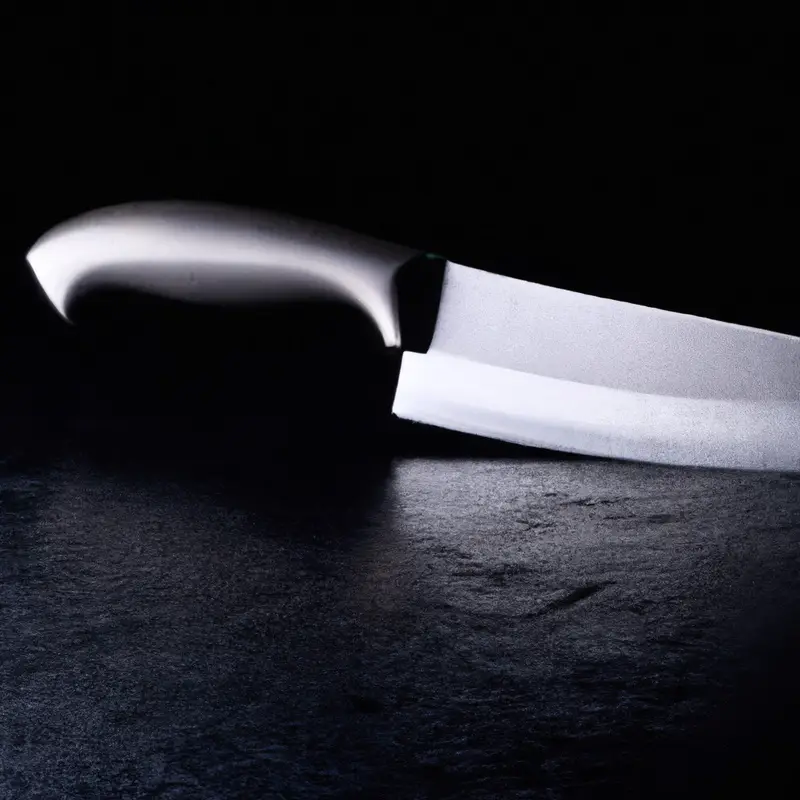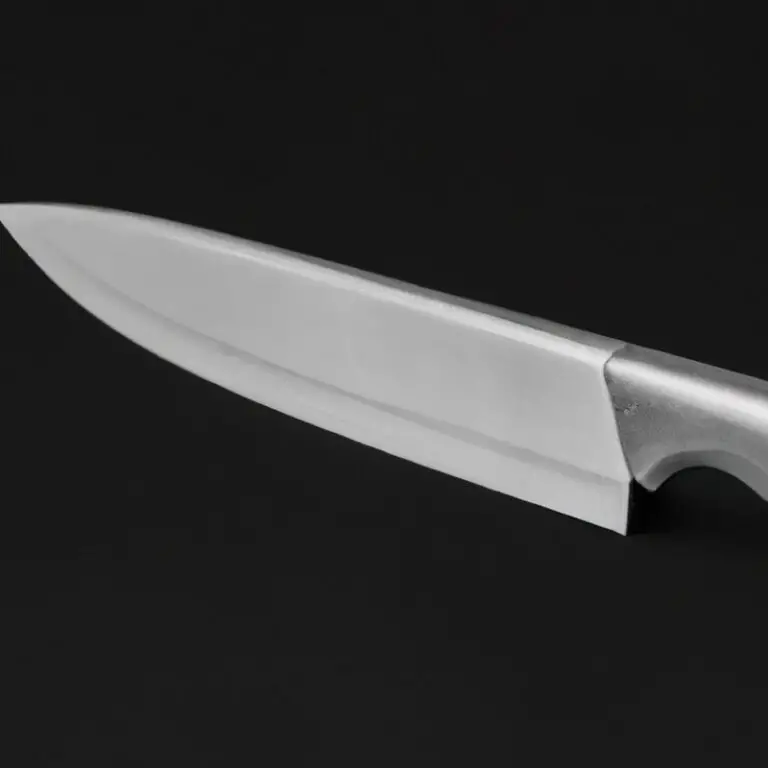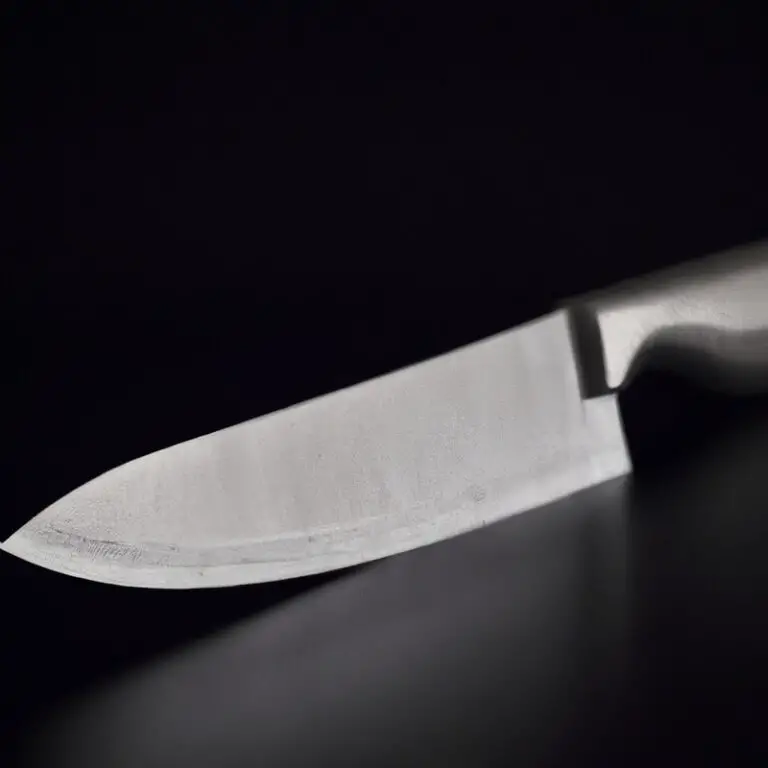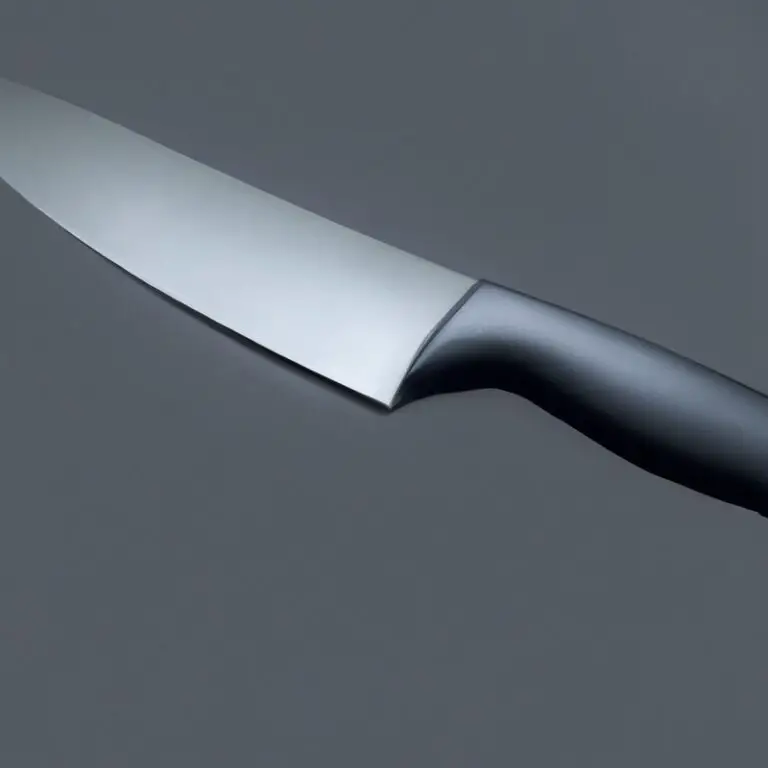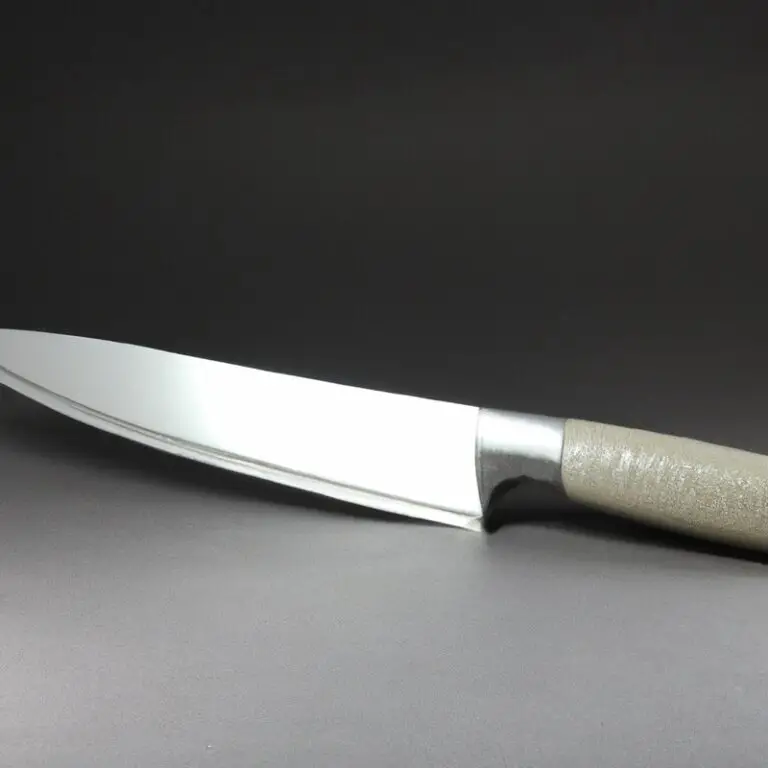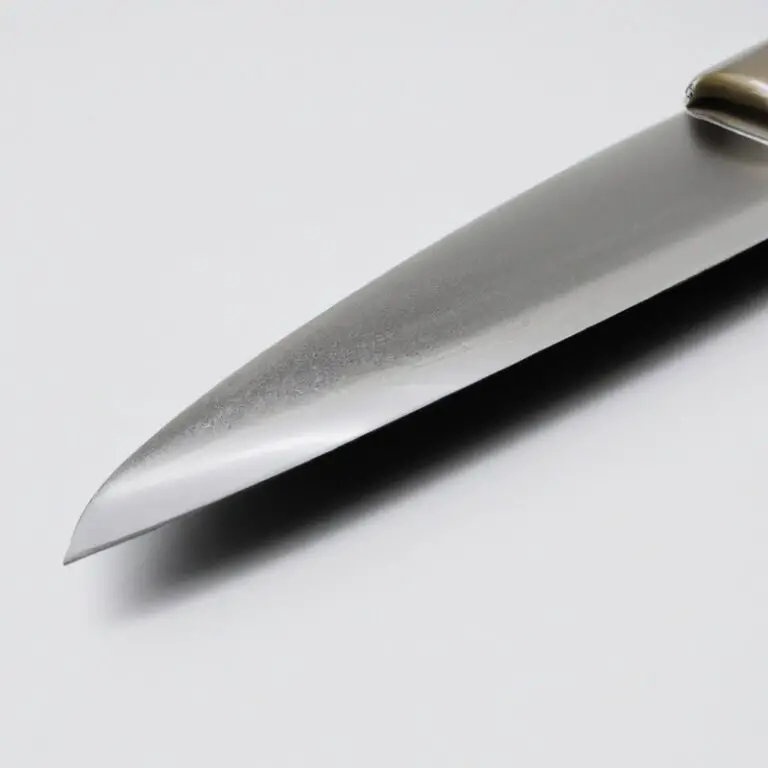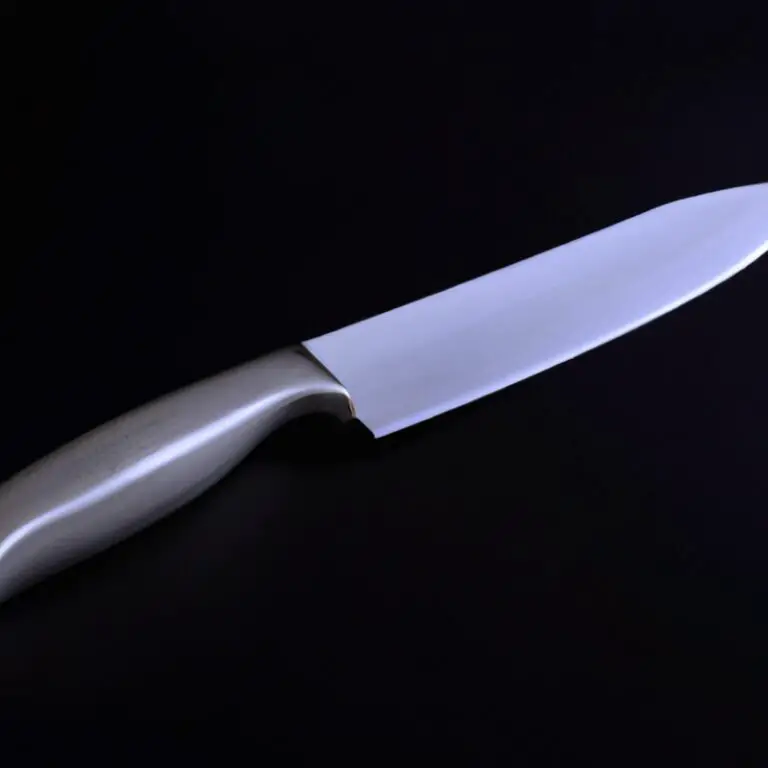Benefits Of a Sharpening Stone For Santoku Knives: Enhance Your Slicing Skills!
Key Takeaways:
- A sharpening stone helps maintain the sharp edge of Santoku knives, ensuring precision and reducing the risk of injury.
- Regular use of a sharpening stone can extend the lifespan of your Santoku knives, saving you money in the long run.
- Proper sharpening technique and maintenance of your Santoku knives with a sharpening stone can enhance the overall cutting experience and help you achieve optimal results in the kitchen.
- Using a high-quality sharpening stone with your Santoku knives can improve their performance, making them a valuable investment for any aspiring home chef or professional cook.
A dull knife can make even the simplest of tasks feel like a chore. That’s where a sharpening stone comes in handy.
In this article, I’ll be sharing personal experiences and expertise on the benefits of using a sharpening stone for Santoku knives.
From understanding the different types of sharpening stones to identifying signs that signal it’s time to sharpen your knife, I’ve got you covered. Discover how to maintain your Santoku knife, hone it, and compare manual and electric sharpening stones to invest in the best sharpening stone for your collection.
With these tips, you’ll have a knife that slices through anything with ease.
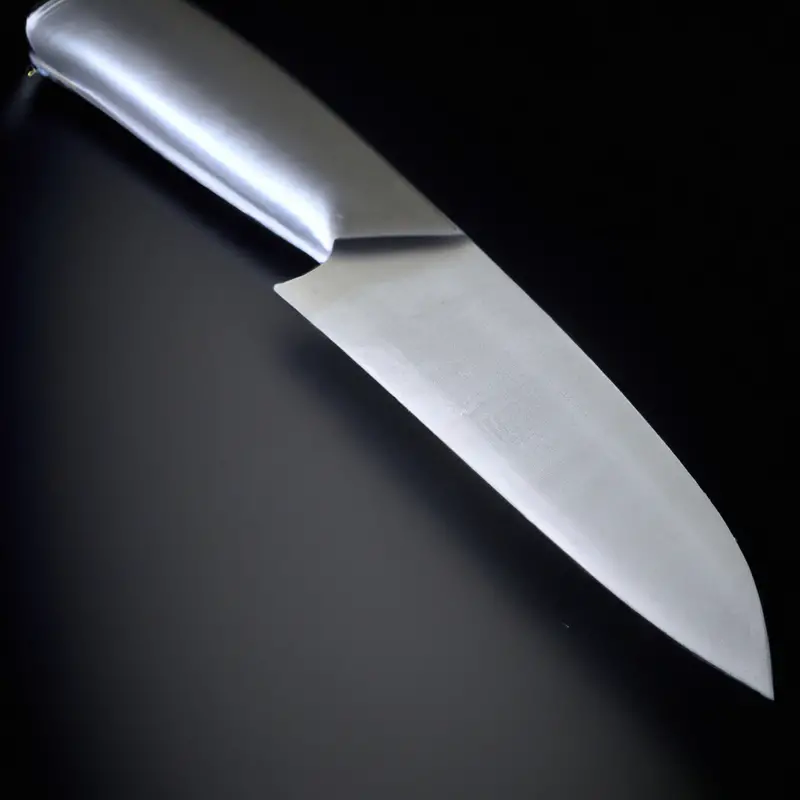
The Importance of Maintaining Your Santoku Knife With a Sharpening Stone
Maintaining your Santoku knife with a sharpening stone is crucial to keep it in its best condition. The sharpness of a Santoku knife significantly affects its performance.
Dull knives not only cause frustration while cutting but also increase the risk of accidents.
A sharpening stone is the best tool to maintain the sharpness of your Santoku knife’s blade. Using a sharpening stone regularly helps in removing the dull and chipped parts of the blade, which in turn improves its performance.
The process of sharpening with a stone also helps in maintaining the proper angle of the blade, ensuring that it is sharpened evenly and consistently.
Sharpening with a stone also saves you money by reducing the number of times you need to replace your knives. A well-maintained Santoku knife can last longer than a poorly maintained one.
Additionally, a sharp Santoku knife makes prepping food easier, reducing the amount of effort you put into cutting.
Overall, considering the importance of maintaining your Santoku knife, using a sharpening stone is a wise investment. It provides you with a cost-effective and efficient way to maintain the sharpness of your Santoku knife’s blade, allowing you to perform your kitchen tasks with ease and precision.
Understanding the Different Types of Sharpening Stones for Santoku Knives
There are three main types of sharpening stones for Santoku knives: oil stones, water stones, and diamond stones. Oil stones are made of aluminum oxide or silicon carbide and require oil as a lubricant.
Water stones are made of natural or synthetic materials, and as the name suggests, require water.
Diamond stones use a diamond abrasive coating and are the most durable and long-lasting option. Depending on the level of coarseness, sharpening stones can be categorized into three groups: coarse, medium, and fine.
Coarse stones have a grain size of fewer than 1,000, and they are suitable for fixing chips or reshaping the blade.
Medium stones have grain sizes of 1,000-3,000 and are used for regular sharpening. Fine stones have grain sizes of more than 3,000 and are used for honing or polishing the blade.
When selecting a sharpening stone, it is essential to consider the level of coarseness and the type of lubricant it requires.
Additionally, it is crucial to choose the right grit size depending on the condition of your blade. It is recommended to have a set of sharpening stones, including coarse, medium, and fine grits, to effectively maintain your Santoku knife.
Step-by-Step Guide on How to Sharpen Your Santoku Knife with a Sharpening Stone
Sharpening your Santoku knife with a sharpening stone is a simple process that involves a few easy-to-follow steps:
- Prepare your sharpening stone by soaking it in water for a few minutes, as per the manufacturer’s instructions.
- Secure your sharpening stone on a flat surface, preferably with a non-slip mat or towel underneath.
- Hold the Santoku knife at an angle of about 15 to 20 degrees to the sharpening stone.
- Use light pressure to run the blade back and forth across the stone, starting at the base of the blade and working your way towards the tip. You should aim to make about 10 to 15 passes on each side of the blade.
- Be sure to maintain an even angle and apply consistent pressure throughout the sharpening process.
- Check for burrs, which are metal particles that can form on the edge of the blade during sharpening. Gently remove any burrs with a honing steel.
- Repeat the sharpening process on the other side of the blade.
- Test the sharpness of your blade by slicing through a piece of paper or a tomato.
With regular use of a sharpening stone, you can keep your Santoku knife sharp and in top condition, which can enhance its performance and lifespan.
The Role of Honing Your Santoku Knife with a Sharpening Stone
Honing your Santoku knife with a sharpening stone is essential to maintain its sharpness and ensure optimal performance. While sharpening removes steel to create a new edge, honing is the process of realigning the blade edge.
This realignment helps to smooth out any imperfections that may have developed on the blade, which can occur after prolonged use.
Honing your Santoku knife on a regular basis is crucial to maintain its cutting effectiveness and prolong the lifespan of the knife. Using a sharpening stone to hone your Santoku knife ensures that the blade retains its original shape and reduces the likelihood of dulling during usage.
Benefits of Using a Sharpening Stone for Santoku Knives Compared to Other Sharpening Methods
Using a sharpening stone is the most effective and precise method of sharpening Santoku knives compared to other sharpening methods. Unlike electric sharpeners or honing rods, sharpening stones offer complete control over the sharpening angle, resulting in a sharper knife edge and a smoother cut.
Sharpening stones also offer a longer-lasting sharpening result than other methods, making it unnecessary to sharpen the knife as frequently.
Additionally, using a sharpening stone can help maintain the knife’s original shape and integrity, as it removes a minimal amount of metal with each use. Moreover, sharpening with a stone can save money in the long run since it is a one-time investment compared to electric sharpeners, which have a short lifespan and require constant replacements.
Sharpening stones can also be used on different knife blade materials, and the process can be tailored to specific knife types and sharpening preferences.
In summary, using a sharpening stone is a reliable, cost-effective, and precise method of sharpening Santoku knives compared to other sharpening methods.
How Often Should You Use a Sharpening Stone for Your Santoku Knife?
To maintain the sharpness of your Santoku knife, it is recommended to use a sharpening stone at least once every two to three months. However, the frequency of sharpening depends on several factors such as how often you use your knife and the hardness of the blade.
If you use your Santoku knife frequently, you may need to sharpen it more often to maintain its edge.
It’s important to note that using a dull knife not only makes slicing and chopping more difficult but can also be dangerous. Therefore, it’s recommended to sharpen your Santoku knife regularly to ensure optimal performance and safety in the kitchen.
The Effectiveness of Using a Sharpening Stone on Different Santoku Knife Blade Materials
A sharpening stone is one of the most effective tools for maintaining the sharp edge on your Santoku knife blade. However, its effectiveness can vary depending on the blade materials.
For example, high-carbon steel blades tend to sharpen quickly and easily on a sharpening stone, while stainless steel blades take longer to sharpen.
Additionally, ceramic blades require a specialized sharpening stone designed specifically for their hard material. Using a regular sharpening stone can damage the blade or remove the blade’s serrations.
Diamond sharpening stones are preferable for hardened steel blades, while water stones are ideal for Japanese forged steel blades, like Santoku knives.
To summarize, the effectiveness of using a sharpening stone on different Santoku knife blade materials depends on the blade’s material and the type of sharpening stone used. It’s essential to choose the right sharpening stone for your blade material to ensure the best results.
Comparison of Manual and Electric Sharpening Stones for Santoku Knives
When it comes to choosing between manual and electric sharpening stones for your Santoku knife, there are a few things you should consider. Manual sharpening stones require more effort and time to use, but they allow you to have more control over the angle and pressure used to sharpen your knife.
This can lead to a more precise sharpening of your Santoku knife, with a smoother and sharper edge.
On the other hand, electric sharpening stones are quicker and more efficient, but they may not allow for as much control over the angle and pressure used. They also tend to remove more material from the blade, which can shorten the lifespan of your Santoku knife.
Ultimately, the choice between manual and electric sharpening stones comes down to personal preference and experience.
If you are new to sharpening knives and want more control, a manual stone may be the better option. If you are experienced and want a faster, more efficient method, an electric stone may be the way to go.
Identifying Signs That Signal It’s Time to Use a Sharpening Stone for Your Santoku Knife
If you notice any of these signs when using your Santoku knife, it’s likely time to use a sharpening stone to restore its edge:
- Difficulty cutting through food: If your knife struggles to slice through fruits, vegetables, or meat, it’s a clear indication that the blade has dulled.
- Uneven or jagged cuts: A dull blade will cause you to apply more force when cutting, resulting in uneven or jagged cuts.
- Damage to the blade: Chips, nicks, or dings on the knife’s edge should be addressed promptly with a sharpening stone to prevent further damage.
- Reduced sharpness: If your knife has lost its sharpness and is no longer producing the clean, precise cuts you’re used to, it needs to be sharpened.
- Increased effort required: If you’re having to use more force to cut through food than you were before, it’s a sign that your knife has dulled and needs sharpening.
Remember, regularly using a sharpening stone on your Santoku knife can help you maintain its sharpness, prolong its lifespan, and enhance its performance.
Advantages of Investing in a Quality Sharpening Stone for Your Santoku Knife Collection
Investing in a quality sharpening stone for your Santoku knife collection has numerous advantages. Firstly, a good sharpening stone will help you maintain the sharpness of your knives, thereby enhancing your cooking experience.
A sharp Santoku knife will help you to easily slice and dice ingredients, making meal prep a breeze.
Secondly, a quality sharpening stone will help to extend the lifespan of your knives. Frequent use of dull knives can cause them to become damaged and have a shorter lifespan.
Regular sharpening with a sharpening stone can prevent this.
Thirdly, sharpening stones are a more cost-effective way to sharpen your knives compared to other methods such as professional sharpening services or electric sharpeners. A high-quality sharpening stone can last for many years, making it a worthwhile investment for any home chef.
Lastly, investing in a quality sharpening stone is a great way to take care of your Santoku knife collection.
These knives are an investment and proper maintenance with a sharpening stone can help you get the most out of them. In summary, owning a quality sharpening stone has numerous benefits, including maintaining sharpness, extending the lifespan of your knives, being cost-effective, and taking care of your Santoku knife collection.
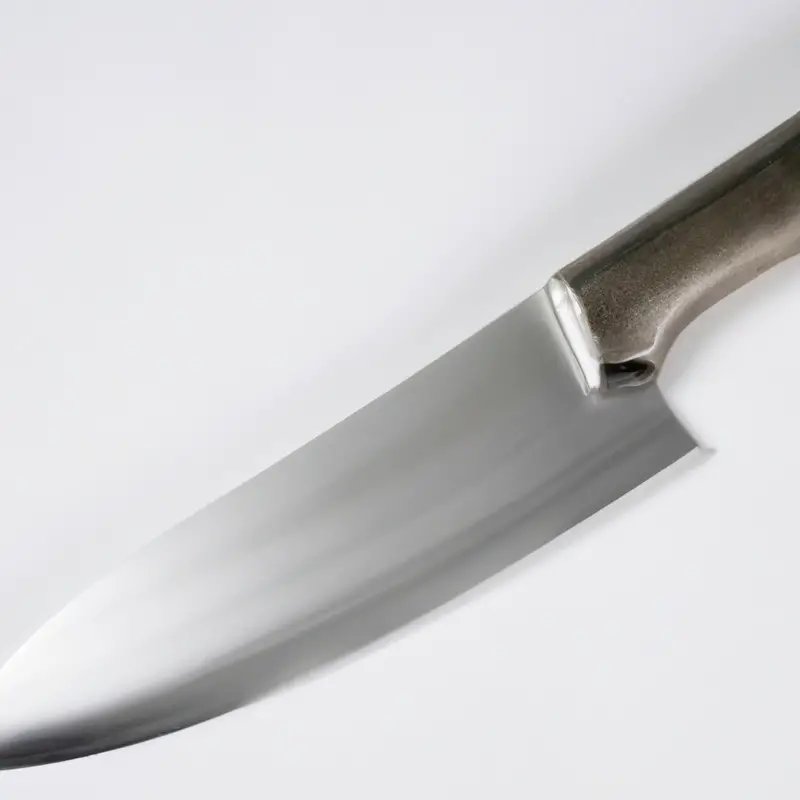
Final Verdict
Maintaining the sharpness of your Santoku knife is paramount to using it effectively and efficiently. A sharpening stone provides a reliable and time-tested means of restoring and maintaining the sharpness of your blade.
By understanding the different types of sharpening stones, the honing process, and how to use the stone for optimal sharpening results, you can ensure your Santoku knife is always ready for peak performance.
A sharpening stone offers a host of benefits compared to other sharpening methods, including affordability, convenience, and effectiveness across a range of blade materials. Additionally, identifying the signs that signal it’s time to use a sharpening stone for your Santoku knife, and investing in a quality sharpening stone, can save you time and money in the long run.
Don’t compromise on the quality of your cutting and cooking experience.
Choose a sharpening stone for your Santoku knife and let it do the sharpening work for you.

